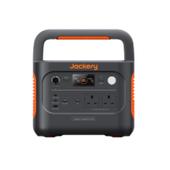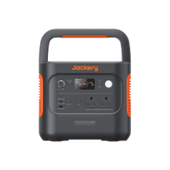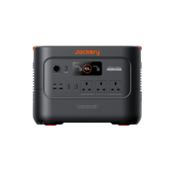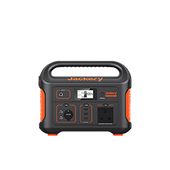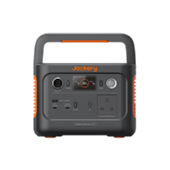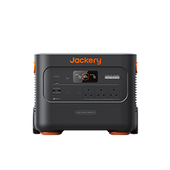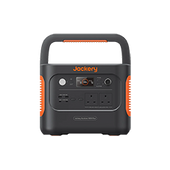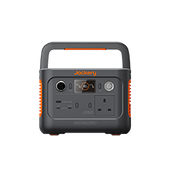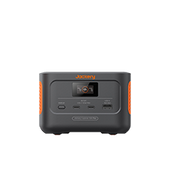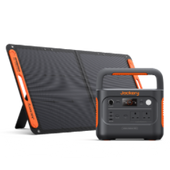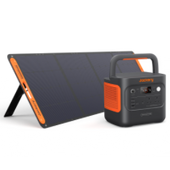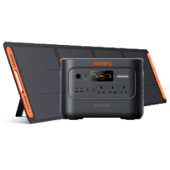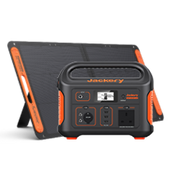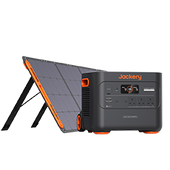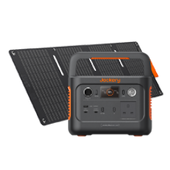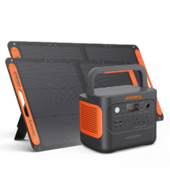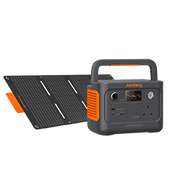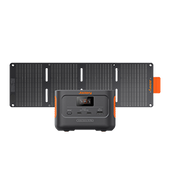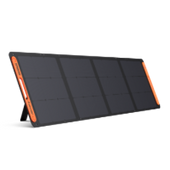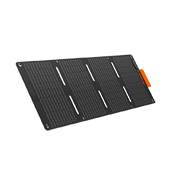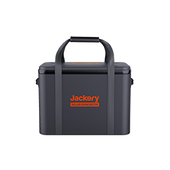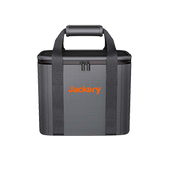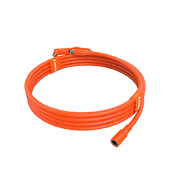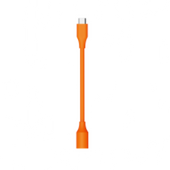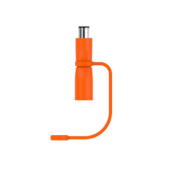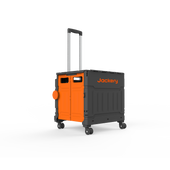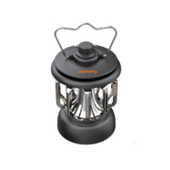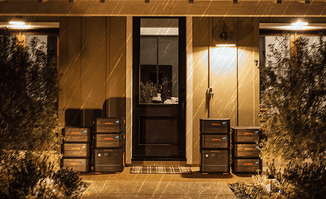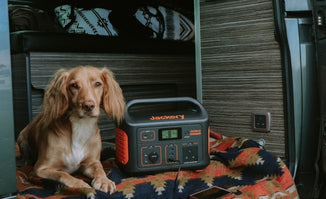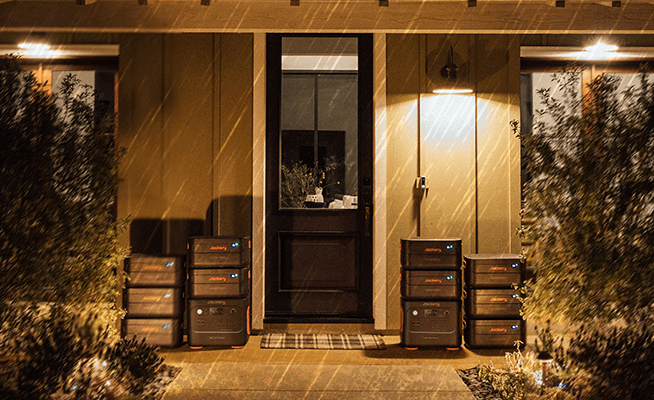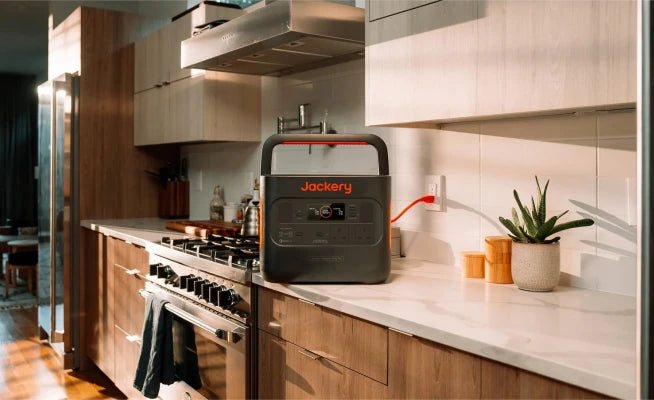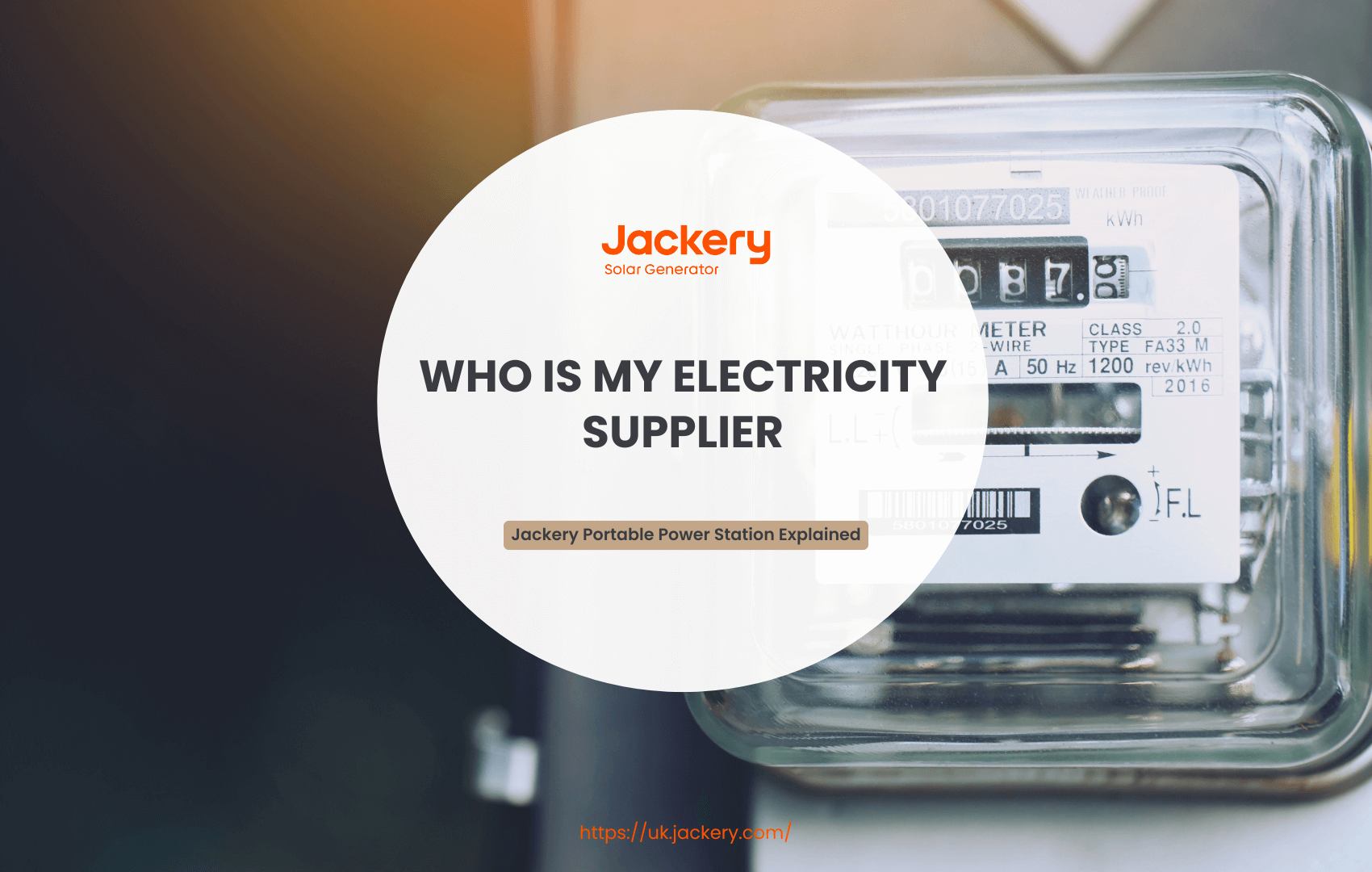Electricity suppliers are the bridge between electricity producers and consumers. They buy energy at wholesale prices and sell it to customers. They are also your primary point of contact for most electricity-related issues, including paying bills and submitting meter readings. Whether you have just moved into a new home or need help with your electricity bill, it is essential to know who your electricity supplier is.
Only by knowing who your electricity supplier is can you effectively manage your bills, save money, and ensure that you get the benefits and services you deserve. This guide is designed to help you easily find your electricity supplier and ensure you have a complete understanding of your current electricity usage.
After learning about your electricity supplier, you may wonder how to save on your electric bills. Except for choosing a cost-effective electric plan and using energy-efficient appliances, we recommend trying the Jackery Portable Power Station to power your household appliances during peak hours or even in the event of a power outage.
|
Key Takeaways: |
|
- Knowing who your electricity supplier is allows you to monitor your electricity consumption, receive accurate billing, and access customer service and support. - The most direct way to determine who your electricity supplier is is to review your recent electricity bill. - If you encounter non-emergency issues, such as faults, cost disputes, or payment difficulties, please get in touch with your electricity supplier. - If you have just moved into a new home and are unsure of your electricity supplier, the quickest and easiest way to find out is to ask the previous owner or agent. - You don't need to do much of the switching process because your new electricity supplier will handle most of the conversion process. - We highly recommend Jackery Explorer 2000 Plus or 3000 v2 portable power station to power your appliances at home or outdoors. |
Why Do I Need to Know Who My Electricity Supplier Is?
In the UK, knowing your electricity supplier is not only basic information but also key to protecting yourself, optimising your energy use and managing your finances. Knowing who your electricity supplier is is essential for several reasons:
Electricity Usage Monitoring
Identifying the electricity supplier you are using can provide access to your electricity consumption data. Many electricity suppliers offer online portals or tools that enable you to track your electricity consumption over time. Not only can it help you identify patterns and track usage trends, but it can also motivate you to optimise your electricity usage habits and reduce waste.
Accurate Billing
Knowing your electricity supplier ensures that you receive accurate and timely bill information. Your supplier may adjust electricity prices in response to market conditions. Therefore, by identifying your electricity supplier, you can stay up to date with the latest information to help check your bill and avoid any surprises. If you encounter unreasonable charges, you can appeal or switch suppliers promptly.
Customer Service and Support
Electricity suppliers can provide you with the necessary account information and address any questions you may have. There are always unexpected situations when using electricity. Some suppliers are also responsible for handling emergencies. If you encounter a power outage, meter failure, or service issue, please get in touch with the relevant supplier for assistance.
Switch to a More Suitable Electricity Plan
The UK allows consumers to choose electricity suppliers freely. If your current electricity supplier and electricity plan are not suitable, you can choose to change to a more suitable one. If you are unsure about your current supplier, you cannot compare or switch to a more favourable package.
Who Is My Electricity Supplier?
Knowing your electricity supplier is essential for managing your electricity bill, comparing prices or switching suppliers. In the UK, your electricity supplier depends on your region and the energy company you choose. However, many people have questions like "Who is my electricity supplier?". If you are not sure who your current electricity supplier is, there are a few ways to find out easily:

Method 1: Check Your Recent Electricity bill
The most direct way to find out your electricity supplier is to check the electricity bill you received. Whether it is a paper bill or an electronic bill sent via email, it will usually clearly display the name and contact details of your electricity supplier.
For example, the "Supplier" or "Your Energy Provider" section on the electricity bill typically lists the company name directly (e.g., British Gas, EDF Energy). If you can't find a recent bill, check your spam folder, as the electronic bill may have been misclassified as spam.
Method 2: Log in to Your Online Energy Account
Most electricity suppliers offer online account services. If you have registered an online account, you can see the supplier information after logging in. You can usually see the supplier name on the account overview page.
The steps to log in to your online energy account to find your electricity supplier are as follows:
Visit the Supplier's Official Website: Use a search engine, such as Google, to find the official website of the electricity supplier (e.g., "British Gas official website").
Log in to Your Account: If you already have an account, log in using your email address, mobile number, and password.
View Account Details: On pages such as "Account Details" or "My Information", you can usually see the supplier's name and related contract information directly.
Method 3: Contact Your Local Distribution Network Operator (DNO)
If you are entirely unable to confirm through your bill or account, you can contact the distribution network operator (DNO) in your area. The UK power grid is divided into multiple regions, each with a local distribution network operator. The distribution network operator (DNO) is the company responsible for delivering gas or electricity to residents' homes and cannot be replaced. They can help you find information about relevant electricity suppliers.
If you need to contact your local distribution network operator to find out about your electricity supplier, please follow the steps below:
Step 1: Log in to the Energy Networks Association search tool.
Step 2: Enter your postcode to find your distribution network operator.
Step 3: Please get in touch with your local network operator for supplier details.
Here are the distribution network operators in the UK and their contact details:
|
Coverage Area |
DNO |
General Enquirers Number |
|
North West |
Electricity North West Limited |
0800 195 4141 |
|
North East & Yorkshire |
SP Energy Networks |
0800 011 3332 |
|
East & West Midlands |
UK Power Distribution |
0800 029 4285 |
|
South West |
UK Power Distribution |
0800 029 4285 |
|
South Wales |
UK Power Distribution |
0800 029 4285 |
|
South East |
UK Power Networks |
0800 029 4285 |
|
London |
UK Power Networks |
0800 029 4285 |
|
East of England |
UK Power Networks |
0800 029 4285 |
|
Central & Southern Scotland |
SP Energy Networks |
0800 092 9290 |
|
Northern Scotland |
Scottish & Southern Electric Power Networks |
0800 048 3516 |
|
North Wales, Merseyside, Cheshire and North Shropshire |
SP Manweb |
0800 001 5400 |
|
Central Southern England |
Scottish & Southern Electric Power Networks |
0800 048 3516 |
(Data Source: nimblefins.co.uk)
Please note that you can contact the distribution network operator (DNO) without needing to know their contact details. If you live in England, Scotland or Wales, you can contact your distribution network operator for free by calling 105. If you live in Northern Ireland, call 03457 643643.
You can quickly confirm your electricity supplier by checking your bill, logging into your online account, or contacting your Distribution Network Operator (DNO). With this information, you can further manage your electricity costs or explore better packages. However, when inquiring about your electricity supplier, it is advisable to avoid providing your bank account or sensitive information to unknown platforms.
Should I Contact My Electricity Supplier or Distributor in the Event of an Emergency?
In the UK, when you encounter an electricity-related emergency, you should choose to contact the Distribution Network Operator (DNO) or the electricity supplier, depending on the nature and urgency of the problem. The following will help you identify whether you should contact the Distribution Network Operator or the electricity supplier in different emergencies:
When to Contact the Distribution Network Operator?
In the UK, the Distribution Network Operator is responsible for the maintenance and troubleshooting of the grid infrastructure (such as poles, cables, and substations). Therefore, it is the primary responsible party for addressing real-time power failures and safety hazards.
You should contact the Distribution Network Operator immediately if the following situations occur:
Sudden Power Outage: The power suddenly goes out at home or on the entire street. However, in the case of a sudden power outage, you need to check whether your neighbours have also lost power and rule out problems with your fuse.
Grid Fault: Voltage surges/sags, frequent power outages, and other issues may be caused by grid problems.
Dangerous Situations: situations that endanger safety, such as broken wires, exposed cables, collapsed poles, sparks from equipment, or fires.
When to Contact the Electricity Supplier?
Electricity suppliers (such as British Gas and E.ON) primarily manage account services and energy supply and can assist with billing questions, service changes, and energy-saving consultations. However, it cannot directly address or resolve grid failures or physical security issues. Therefore, if the problem does not involve immediate danger, you should contact your electricity supplier.
If the following situations occur, you can choose to contact your electricity supplier:
Bill or Account Problems: This typically involves fee disputes, payment difficulties, and other related issues.
Non-Emergency Failures: These typically include meter failures (such as abnormal display or no reading), planned power outage notices, and other similar issues.
Energy Advice: You can contact your electricity supplier to make energy efficiency improvements, switch to a more suitable package, and explore other options.
How Do I Find My Electricity Supplier After Moving?
When you first move into a new home, confirming your electricity supplier is the first step to managing your energy bills and services. If you are unsure who your electricity supplier is after moving into a new home in the UK, here are some quick ways to find out:

Check Existing Information
If you have just moved into a new home, review the documents you received during the move (such as the lease agreement and the property handover list); the previous owner or agent may have left information about the electricity supplier. If the last resident left a record of meter readings or energy bills, you would need to verify the supplier's name and contact the information directly. Alternatively, you can also check the indoor or outdoor electricity meter; some of these meters may have a supplier label or contact information.
Ask the Previous Owner or Agent
If you still have contact information, it is the quickest way to contact the previous resident or real estate agent directly. They usually know the historical service information of the house. If you rent a home through an agent, the agent usually has information about the service provider of the house, and you can ask them for relevant documents.
Ask Neighbors or Property
Neighbouring residents in the same area often use the same electricity supplier; you can ask them for the name of the commonly used supplier in the area. If you live in a property management area, the property may handle energy supply centrally; you can consult the property centre for information.
Keep an Eye on Emails and Bill Notifications
Some electricity suppliers will send a welcome letter or first bill (either by paper or email) within a few weeks of your move-in date. Keep an eye on your mailbox and spam folder. However, this is only if the previous occupants have notified the supplier that they are vacating the premises. You may receive a default letter with the details of the electricity supplier.
Contact the Electricity Supplier Directly
Suppose you cannot confirm it through the above methods. In that case, you can call the customer service hotline of many well-known electricity suppliers (such as British Gas, E.ON, EDF Energy, etc.) and provide your address to confirm whether it is within their service area and if you are a customer.
Using the above methods, the electricity supplier can usually be confirmed within one to two working days. If you encounter difficulties, the 105 hotline or local Citizens Advice can provide further help. Register an account and update your contact details immediately after confirming the supplier to avoid missing bills and essential notifications.
How Do I Switch to a New Electricity Supplier?
Changing electricity suppliers is an effective way to optimise your energy bills, choose a greener service, or improve your customer experience. Changing electricity suppliers in the UK is a relatively straightforward process and can often save you money or provide you with a better service. Here is a detailed guide to changing electricity suppliers for UK residents:

Step 1: Gather Your Information
If you want to change electricity suppliers, the first step is to gather all the valuable information.
Your current energy bill will display your current supplier, tariff, and energy consumption.
Your address: Make sure you enter the correct postcode.
Your Meter Point Administration Number (MPAN): This unique number, found on your energy bill, identifies your electricity supply.
Step 2: Compare Electricity Suppliers
Use an officially recognised energy comparison platform such as Uswitch, MoneySuperMarket or Compare the Market. You only need to enter information such as your postcode and electricity consumption to get and compare quotes from different suppliers. When comparing electricity suppliers, it is essential to consider factors such as price (fixed or floating rate), contract length, green energy proportion (including renewable energy certificates), customer reviews, and additional services (such as smart meters and prepayment options).
Step 3: Decide on a New Supplier
After comparing, choose the electricity supplier that best suits your needs and confirm that it covers your area. Whether you apply through the official website, by phone, or by email, you will need to provide information such as your name, address, bank account details (for direct debit), the name of your current supplier, the type of meter (such as bright or traditional), and your recent meter readings. You can also check whether any preferential terms are available, such as new customer discounts or free installation equipment.
The new supplier will coordinate the switching time (usually takes 1-3 weeks) and send a confirmation email. The switching date is typically a weekday, avoiding weekends or holidays.
Step 4: Notify the Existing Supplier
Under the UK's "seamless switching" rules, the new supplier will handle the switching in full. Although it is not necessary, it is recommended to proactively inform the old supplier to ensure that the account is cleared. If the contract has not expired, you may be required to pay an early termination fee, which must be verified in advance.
Step 5: Complete the Switch
You don't need to do much of the switching process. Your new electricity supplier will be responsible for most of the conversion process. They usually contact your old supplier, coordinate the switch with the relevant energy network, and complete the final bill calculation. The new supplier will automatically take over the power supply service through the National Grid, ensuring that the power supply remains uninterrupted during the switch; only the billing party will change.
Step 6: Confirm That the New Package Is Effective
After switching, you will receive a welcome letter, bill, and contract details from the new supplier, and you will confirm that the account information is correct. If you have any questions, please get in touch with our customer service immediately. Additionally, you may need to log in to the new supplier's online account to manage payment methods (such as direct debit or prepayment), view electricity usage data, and update your personal information.

Jackery Portable Power Stations to Save Electric Bills
After knowing your electricity supplier and how to find or switch an electricity supplier, you may wonder how to save your electricity bills. In addition to selecting a reasonable electric plan and using energy-efficient appliances, consider investing in a portable power source, such as the Jackery Portable Power Station.
You could charge your Jackery Portable Power Station during these cheaper off-peak hours and then use the stored energy to power certain appliances during expensive peak hours. To see significant savings, you'd need to shift a substantial portion of your electricity consumption to the Jackery during peak times.
The size of the Jackery unit would need to match your shifted load, and the overall cost savings would depend on the difference between peak and off-peak rates, as well as the charging efficiency of the Jackery.
While a Jackery Portable Power Station can offer some advantages in the UK, particularly during power outages or for off-grid use, its ability to significantly "save electric bills" in a typical household scenario is generally limited and depends heavily on specific usage patterns and existing energy tariffs. Here, we recommend the Jackery Explorer 2000 Plus and 3000 v2, which offer sufficient power capacity and fast recharging times.
Jackery Explorer 2000 Plus
The Jackery Explorer 2000 Plus is a significant step up in capacity and power output compared to smaller portable power stations, making it more capable of powering a wider range of household appliances. While it's still not a direct replacement for grid power, its larger capacity and features can make it a more viable option for specific electricity bill-saving strategies, especially when combined with Jackery Solar Panels.

Direct Impact on Bill Savings (Time-of-Use Tariffs): Its substantial base capacity of 2042.8Wh (approximately 2 kWh) allows you to store a significant amount of electricity. If you're on a "time-of-use" (TOU) tariff (like Economy 7 or Economy 10 in the UK), you can charge the Explorer 2000 Plus during cheaper off-peak hours (e.g., overnight) and then use that stored energy to power appliances during expensive peak hours. The larger capacity allows you to offset a greater portion of your peak consumption, resulting in more noticeable savings.
Expandability: The ability to add up to five additional battery packs (E2000 Plus) to reach a massive 12kWh makes it a more substantial "virtual battery" for your home. This expanded capacity truly allows you to shift a significant portion of your daily electricity usage away from peak grid prices.
High Power Output (3000W Continuous, 6000W Surge): This high output means it can handle demanding appliances that smaller power stations cannot, such as refrigerators, washing machines, microwaves, small portable air conditioners, and even some power tools. This increases the scope of what you can power using off-peak or solar-generated electricity, leading to greater potential savings.
Better ROI: The LiFePO4 battery chemistry offers a much longer lifespan (e.g., 4,000 cycles to 70%+ capacity). This means the initial investment is spread over many more years of use, improving the return on investment (ROI) from your electricity bill savings. A longer-lasting battery makes the "peak shifting" strategy more financially viable over the long term.
Jackery Explorer 3000 v2
The Jackery Explorer 3000 v2 is a powerhouse in the portable power station market, designed with features that make it even more compelling for saving on electric bills in the UK, especially for users with higher energy demands or a commitment to solar energy.

Maximised Time-of-Use (TOU) Arbitrage: With 3kWh of usable capacity, the 3000 v2 allows you to store a significantly larger amount of cheap off-peak electricity from your grid. In the UK, off-peak rates can be as low as 10-15p/kWh, while peak rates can be 30-40p/kWh or even higher on dynamic tariffs. This substantial difference allows for greater financial savings when you charge during off-peak times (typically 12 a.m. to 6 a.m.) and then use your home's power during peak hours.
Powering More of Your Home: This larger capacity enables you to run more high-drain appliances or power multiple essential devices for extended periods during peak hours. For example, you could power a refrigerator, charge an EV (if you have the proper setup), run a washing machine, or even a microwave, all from stored, cheaper energy.
High Power Output (3600W Continuous, 7200W Surge): The 3600W continuous output (with a 7200W surge capability) is significant. It can handle almost any standard household appliance, including those with high startup surges. This is crucial for maximising your ability to shift high-consumption loads from the grid to the power station, directly impacting your bill.
Uninterrupted Power Supply (UPS) Functionality (< 20 ms): This is a key feature for achieving bill savings and convenience. The 3000 V2 can act as an emergency power supply. If you have it plugged into an outlet and then plug critical devices into the Jackery, it can seamlessly switch to battery power (in less than 20 milliseconds) if the grid goes down.
FAQs
The following are the frequently asked questions about the electricity suppliers in the UK.
1. Who provides me with electricity?
In simple terms, it is the electricity supplier who provides you with electricity, as they are responsible for selling electricity to you, sending you bills and providing customer service.
However, in the UK, your electricity supply is usually provided by a combination of power plants, electricity suppliers and the Distribution Network Operator. Electricity is produced by power plants (such as nuclear power, wind power, natural gas, etc.). Electricity suppliers buy electricity from power generators and sell it to users. However, the Distribution Network Operator is responsible for transmitting electricity from the high-voltage grid to homes and businesses.
2. How do I find my current electricity supplier?
The most direct way to find out who your electricity supplier is is to check the electricity bill you receive. Your electricity bill will usually clearly show the name and contact details of your electricity supplier. If you cannot find a recent electricity bill to confirm your electricity supplier, you can contact the distribution network operator (DNO) in your area and request confirmation.
3. If I am not satisfied with my current electricity supplier, can I switch to a different one?
Yes. In the UK, if you are not satisfied with the service or terms provided by your current electricity supplier, you have the right to change. However, if the contract has not expired, you may need to pay a penalty to the electricity supplier.
4. How long does it take to switch electricity suppliers?
Usually, the entire process of switching electricity suppliers takes about 21 days. During this time, your new electricity supplier will handle all matters related to the transition. However, the exact time it takes to switch electricity suppliers depends on many factors, including the type of meter you have.
Final Thoughts
If you have any questions or need assistance with your electricity supply, the best course of action is to contact your electricity supplier directly. They have the most accurate and up-to-date information about your electricity account and consumption. In other words, only by knowing who your electricity supplier is can you get reliable customer support, monitor your electricity usage, and make informed decisions about your electricity needs. In this guide, we provide you with practical methods to help you identify your electricity supplier and get more resources.

